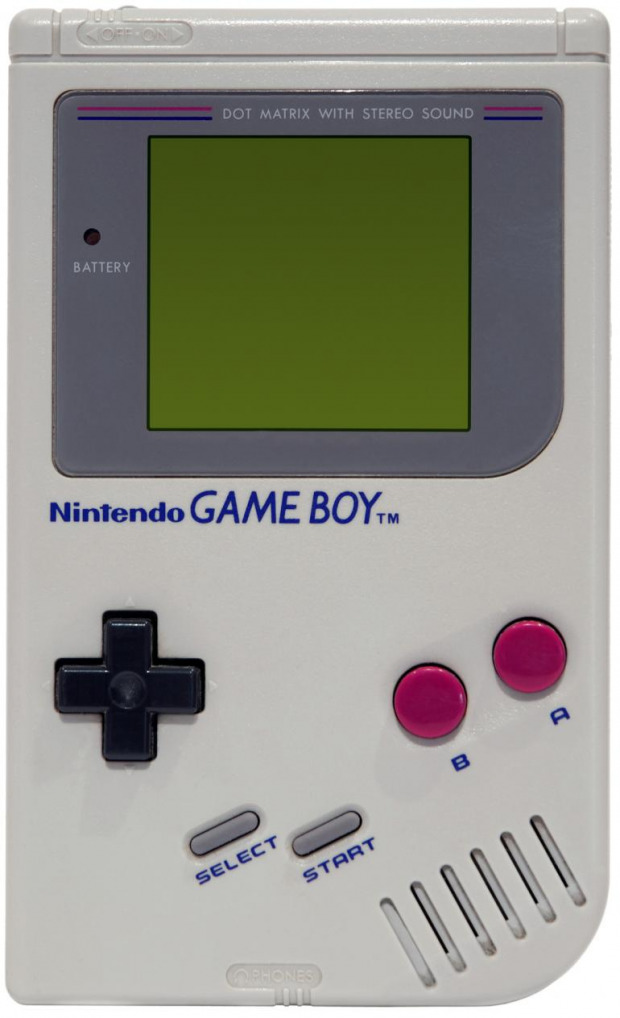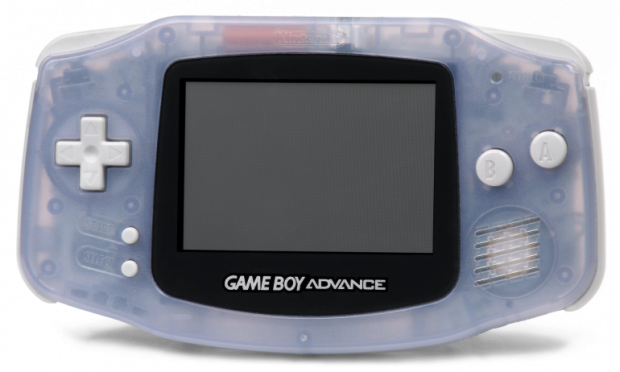Gameboy
The Game Boy is a Nintendo manufactured handheld released initially in 1989. It was the first dedicated 8-bit handheld system from the company with that made use of interchangeable cartridges to play many different titles. It featured a 2.6" 4-shade LCD, stereo sound through headphones, and interchangeable cartridges. The button layout was based on that of the Nintendo Entertainment System controller. It used 4 AA batteries, but can also be used with an AC Adapter to power the system from a wall socket. While not the first handheld system to use ROM cartridges, it was certainly the most popular of its time. (Source: Nintendo wiki)
Works Developed in this Platform:
| Work title | Author | Language | Year |
|---|---|---|---|
| Doom | John Carmack | English, Ewe | 1993 |
| Pac-Man | English, Ewe | 1980 | |
| Space Invaders | English, Ewe | 1978 | |
| Super Star Wars: Return of the Jedi | English, Ewe | 1994 | |
| Tetris | English, Ewe | 1984 | |
| The Legend of Zelda: A Link to the Past | Shigeru Miyamoto | English, Ewe, Japanese | 1991 |
Enter Gunpei Yokoi, the creator of the Game and Watch series of handheld electronics. That basic but fun series bring some success to Nintendo, but Yokoi still sought to find a way to make the video game experience truly portable. The result was the Game Boy, developed by Yokoi and the Nintendo Research and Development Team One (R&D1).
Seven years after the launch of the original Game Boy, Nintendo released a smaller, lightweight version of its hit Game Boy. Unlike its predecessor, the Game Boy Pocket required only two AAA batteries, utilized a smaller Game Link Port and offered a black-and-white display.
Two years after the release of the Game Boy Pocket, Nintendo finally introduced a color variant of the Game Boy console. The Game Boy Color managed to retain backwards compatibility with older monochromatic Game Boy games while giving game developers the ability to create more-detailed game worlds.
The Game Boy Advance was a departure from Nintendo’s vertical design on previous Game Boy portable handheld consoles. With processing capabilities likened to those of the Super Nintendo Entertainment System (Super NES), several games that originally launched on the Super NES were eventually adapted for Game Boy Advance, such as “Super Mario World” and “The Legend of Zelda: A Link to the Past.”
Despite the change to a smaller form factor cartridge of the Game Boy Advance, it still retained compatibility with older Game Boy cartridges. However, it was widely criticized for its lack of a backlit display.
Nintendo changed the form factor of the Game Boy Advance yet again with the February 2003 introduction of the Game Boy Advance SP. The new model corrected a lot of the complaints of the original Game Boy Advance with the inclusion of a front-lit display and rechargeable battery.
Despite the previous successes of the Nintendo Game Boy and Game Boy Advance lines, the handheld video game console that shaped generations of gamers was already on at its end of life with the release of the Game Boy Micro, an even more portable revision of the Game Boy Advance, minus the backwards compatibility of the older Game Boy Advance line of handhelds.
Nintendo began to shift its resources increasingly toward Nintendo DS development, leading to the demise of the Game Boy series of handheld portable consoles. In 2008, the Game Boy series was formally discontinued, ending a run of over 200 million Game Boy units shipped over the course of the console series' lifetime.
(Source: international business times)



